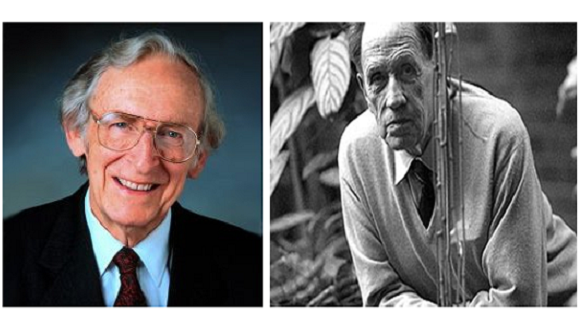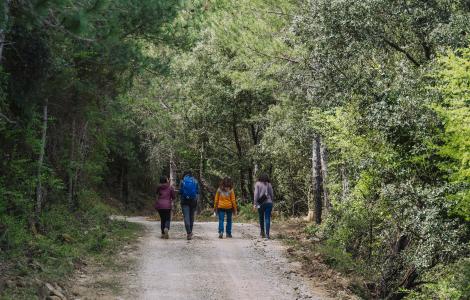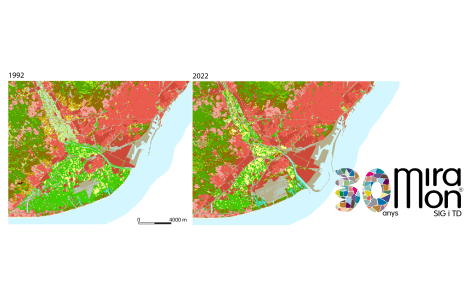Fifty years ago

In 1966, the USA’s President is Lyndon Johnson, in the USSR it is Brezhnev, in France de Gaulle, in India Indira Gandhi. There is an increasing US involvement in Vietnam’s war (and an increasing refuse of war inside the US).

In an accident of two American planes, four hydrogen bombs fall between Palomares and Almería. France abandons the NATO and make its first atomic assay in Mururoa. Great floods occurred in Italy, with severe losses in the art heritage, mostly in Florence. That year die Buster Keaton, Montgomery Clift, Walt Disney, the Catalan writers Victor Català (Caterina Albert) and Miquel Llor and born Romario, Stoichkov and Cantona, Mike Tyson, the actors John Cusack and Sophie Marceau, the soprano Cecilia Bartoli, the writer Maria Pau Janer and the singer Albert Pla. Elizabeth Taylor wins an Oscar for ¿Who's afraid of Virginia Woolf? The film The spy who came from cold gives the fame to John Le Carré. Bergman presents Person (many of us will understood this film 30 years later); Antonioni Blow-up; Truffaut Fahrenheit 451; Saura does his best film with La caza; but what most dazzle the male public is Raquel Welch, the improbable cave woman of A million years ago. Sergio Leone makes in Spain perhaps the best spahetti-western, The good, the bad and the ugly.
The final version of El quadern gris, by Josep Pla, a book that has been translated in German, English, Spanish, French, Dutch, Portuguese and Serbian, is published as the first volume of the Obra Completa. In Barcelona, there are two relevant anti-franquist events: the Caputxinada, a historical meeting during the student’s revolt, and a surprise demonstration by 130 clergymen, both acts end broken by the police. Pierre Vilar closes Catalunya dins l’Espanya moderna (Edicions 62, vol. III). The ethologist Jordi Sabater Pi (1922-2009) buys, at Guinea Ecuatorial, the albino gorilla Snowflake by twenty thousand pesetas.
Eugene P. Odum, who in 1964 announced the good news in The new ecology, creates in 1966 the Institute of Ecology at the University of Georgia, with Frank Golley as the scientific manager.
This year, in autumn, I become graduated in Biological Sciences. Ramon Margalef (1919-2004), who had been in charge of ecology lectures at the Faculty, was also the director of the Instituto de Investigaciones Pesqueras (now Instituto de Ciencias del Mar) and the next year he becomes the first full professor of ecology in Spain, at the Universitat de Barcelona (Fernando Gonzalez Bernáldez (1933-1992) was the second one at the Universidad de Sevilla in 1970). In 1963, Margalef published his most quoted article, On Certain Unifying principles in ecology (Amer. Nat. 97: 357-374), and in 1968, Perspectives in ecological theory, (University of Chicago Press, Chicago, 111 pp.): he was in his more productive period, actively contributing to the birth of a new vision of ecology as the biology of ecosystems.
In 1966, George W. van Dyne, an ecologist who died young, at 48, in 1981, write Ecosystems, systems ecology and systems ecologists (a report that in 1969 became a book with the same title), where he adverts on this change in ecology. He cites three Margalef’s papers, the 1957’s Information theory in ecology, the 1962’ Modelos físicos simplificados de poblaciones de organismos (both in the Mem. Real Acad. Ciencias y Artes de Barcelona) and the above mentioned On certain... Eugene P. Odum (1913-2002), who in 1964 announced the good news in The new ecology (BioScience 14: 14-16), creates in 1966 the Institute of Ecology at the University of Georgia, with Frank Golley (1930-2006) as the scientific manager. The new ecology uses system analysis with mathematical approaches and computer modeling. Howard T. Odum (1924-2002), Eugene’s brother, is developing an approach to the ecosystems using analogies with electronic circuits and some thermodynamic concepts, Margalef is a close friend of the Odum brothers.

K.E.F. Watt, who published in 1966 Ecological Systems Analysis (Acad. Press, N. York), two years after will open the doors to applications from the new ecology with Ecology and Resource Management (McGraw-Hill, N. York). MacArthur and Pianka publish On optimal use of a patchy environment (Am. Nat. 100: 603-609), on the theory of ‘optimal foraging’. In 1967 appears the revolutionary and famous book by MacArthur and Wilson The theory of island biogeography (Princeton Univ. Press), which will give a theoretical basis to new approaches in conservation. Robert MacArthur (1930-1972), a former PhD student of G.E. Hutchinson at Yale, is only 36 years old and he will die six years later, leaving an extraordinary footprint. Eric Pianka (born in 1930) has been one of the fathers of evolutionary ecology.
Diversity attracts interest in 1966, mostly by two papers of the Canadian ecologist Evelyn C. Pielou (born in 1924), The measurement of biological diversity in different types of collections (Biol. 13, p. 131), and Species Diversity and Pattern Diversity in the Study of Ecological Succession (Biol., 10, 370); one by Pianka, Latitudinal gradients in species diversity (Am. Nat., 100, p. 33); and one by RT Payne (born in 1933), Food web complexity and species diversity (Am. Nat. 100: 65-75). The Journal of Theoretical Biology finally accept the article by Lynn Margulis Origin of mitosing cells (although it appears the next year), which launches the transcendental theory of serial endosymbiosis.
Fifty years later, the systems ecology is in a slower motion. In the years 1970-80 it recalled much criticism, ecology became more reductionist and experienced a huge diversification of interests.
In other aspects of ecology, Charles Elton (1900-1991) publishes The pattern of animal communities; Thomas D. Brock (born in 1926) the Principles of microbial ecology (ecologists are just now giving to the microbes their truly relevance in ecosystems); and Faegri and van der Pilj The principles of pollination ecology. Marvin Harris (1927-2001) publishes a classic of cultural ecology, The cultural ecology of India's sacred cattle. The chapter of Kenneth E. Boulding (1910-1993) The Economics of the Coming Spaceship Earth, in Environmental Quality in a Growing Economy, will be in turn a classic of the relations between ecology and economy.
Fifty years later, the systems ecology is in a slower motion. In the years 1970-80 it recalled much criticism, ecology became more reductionist and experienced a huge diversification of interests. But if we had an average electrocardiogram of the ecologists excitement along the history, probably we would find the top moments: 1) in the 1960-1970, when they thought possible to build a solid and very general ecological theory, with a strong mathematical basis, which aid us to understand, by using macroscopic parameters as diversity or production/biomass, the function of every kind of ecosystems; and 2) in the last years, with the interest for ecosystem responses to climate change and the application of many new technologies.
Notícies relacionades

L’IPBES publica dos informes per transformar la manera com ens relacionem amb la natura, conservar-la i sobreviure

L’impacte social de la recerca es consolida a la cultura científica del CREAF



